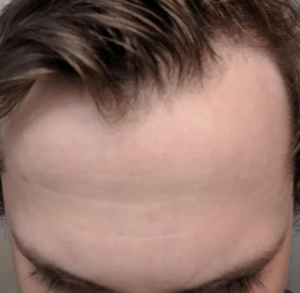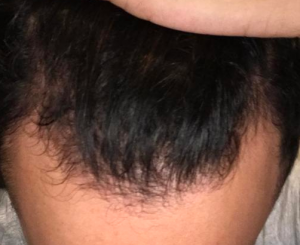Age Related Thinning (ART) is a new term in our field defined by Dr. Robert Bernstein and I in last months Hair Transplant Forum. This is a very important writing because it addresses the change in hair character that can happen to any person of almost any age.
Age related thinning (ART) is characterized by the progressive, diffuse, uniform
decrease in hair shaft diameter. The key word is “uniform.” Both AGA and ART
are progressive conditions and can be so at varying rates. And both AGA and ART
can be diffuse, with the female pattern of AGA displaying diffuse miniaturization
and men having both diffuse patterned and un-patterned alopecia (DPA and
DUPA).
Hair thinning in AGA is a focal process. It starts with one follicle in a follicular unit
and then gradually involves others, characteristically resulting in hairs of varying
diameters (miniaturized or partially miniaturized hairs). In contrast, hair thinning
in ART is a uniform process. Uniformity is the defining characteristic of ART, where
every hair shaft becomes finer at the same time and to the same degree. ART is
not merely thin hair it is a genetically programmed process that relentlessly
reduces hair shaft diameter over time.
It is important to make the distinction between gross clinical thinning, which can
be due the loss of the absolute numbers of full thickness hairs (telogen effluvium),
the presence of miniaturization (AGA), or the accumulated thinning of every hair
follicle (ART), and the thinness of the actual hair. Thin hair is a characteristic of
every hair in ART, some hair in AGA and not seen in TE, although in all three
conditions ones overall head of hair can look and feel “thin.”
Age related thinning has often been referred to as senile alopecia, but the
problem with this latter term is that the condition can start at an early age (just as
AGA can). ART is truly an age-related genetic process that involves all the hairs on
one’s head. It is not androgenetic. It is can be the only process that is occurring
when a women or man complains that they have thinning hair or decreased hair
volume. But ART can certainly occur along with AGA – and usually does!
The diagnosis of age-related thinning is simple, no matter where you look you
seen uniformly fine hair. When you look at the donor fringe of an 80-year-old man
using dermoscopy and see uniform, fine hair, these changes are from ART, not
AGA.
The implications are real. ART can make a non-miniaturizing, apparently stable
donor area “go bad.” It can result in a disappearing hair transplant, a translucent
donor zone and visible donor scars. Unfortunately, there is currently no specific
treatment for age-related thinning. Only an accurate diagnosis and good surgical
planning will spare the patient these problems.
The importance of the clever paper by Dr. Muthuvel is to alert the clinician to
consider a wide variety of factors when assessing the patients candidacy for hair
transplantation (SDA, DT and RT). Perhaps we can consider one more.
Robert M. Bernstein MD, New York, NY and William R. Rassman MD, Irvine, CA





